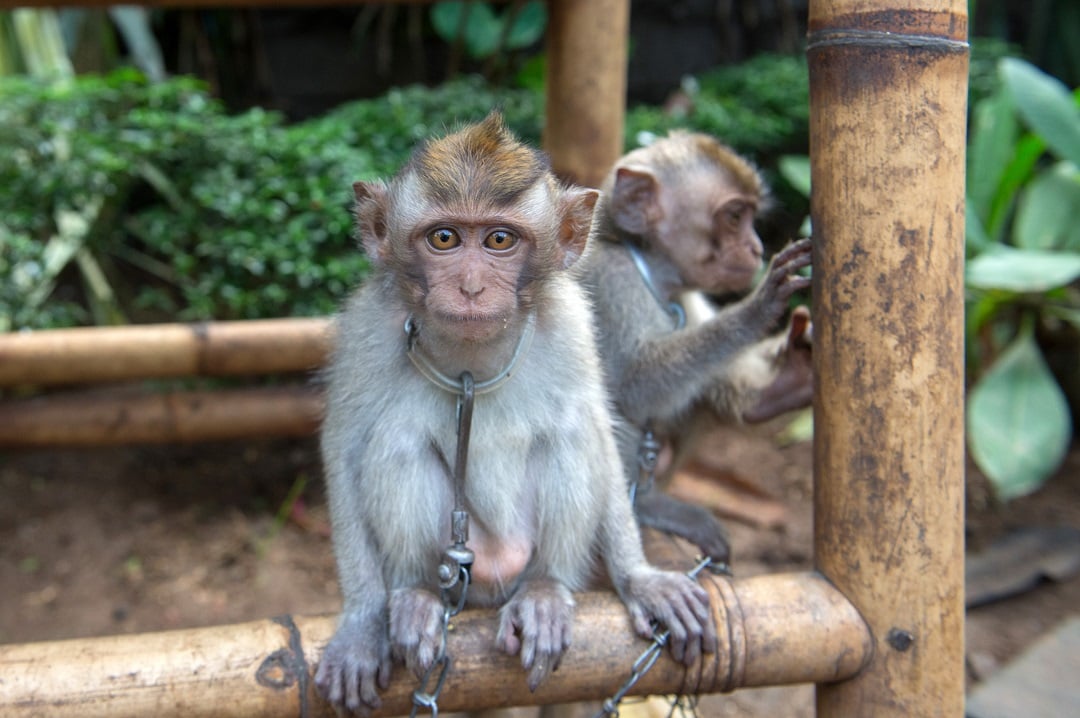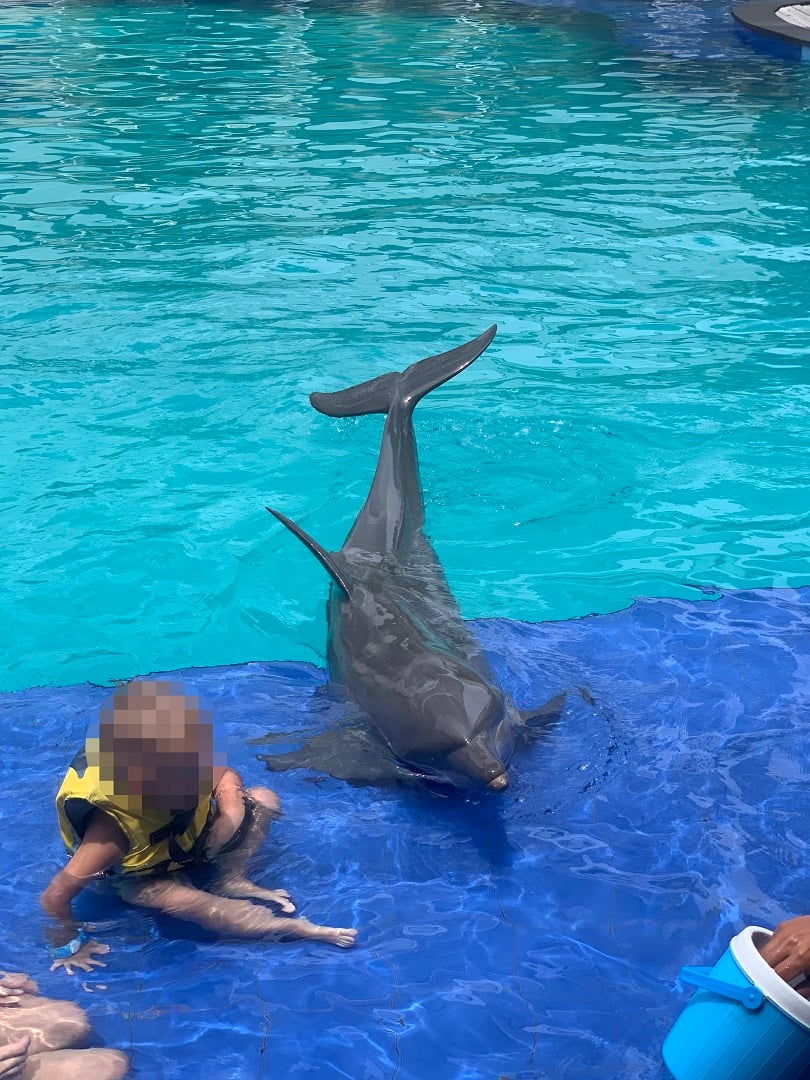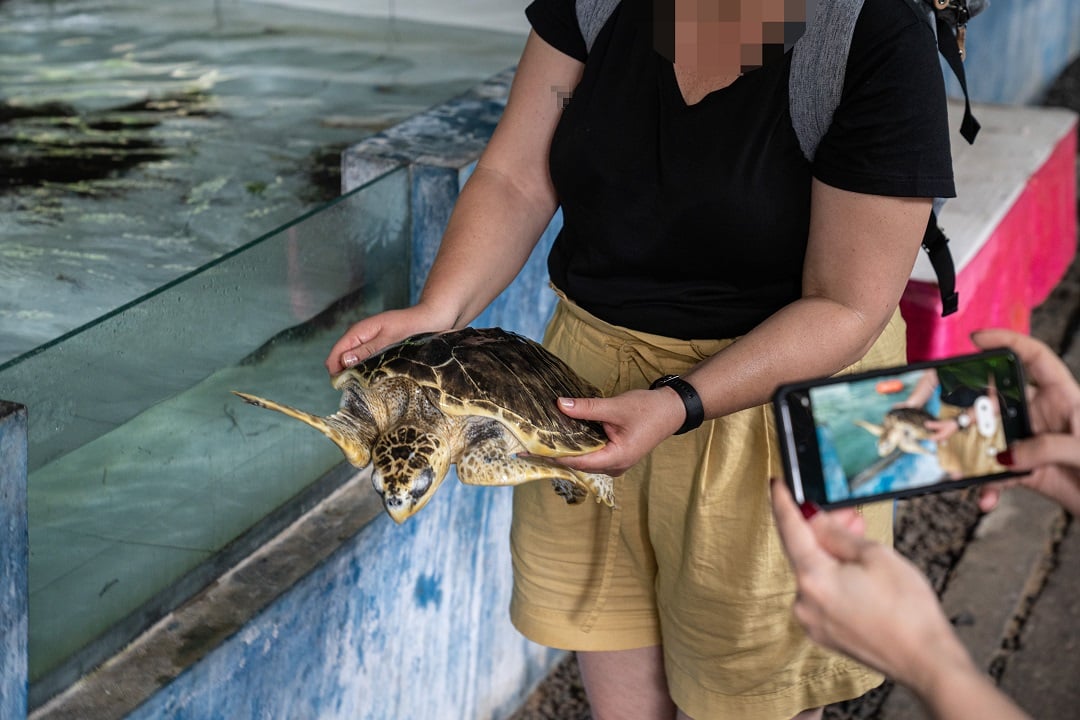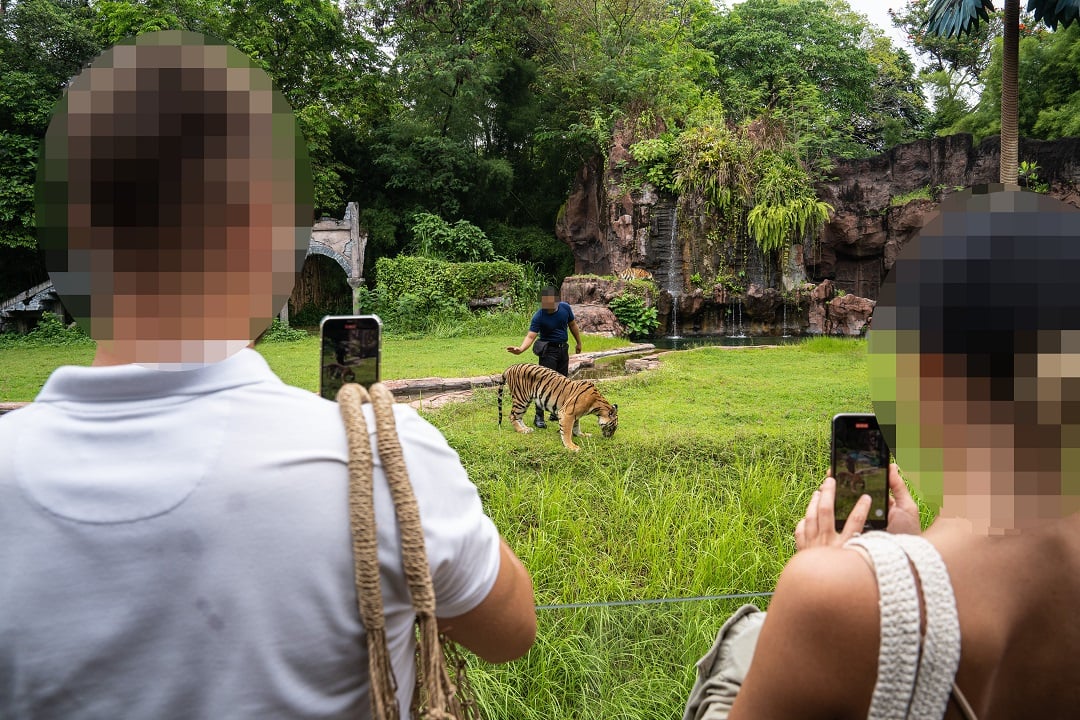
Trouble in paradise
Animals suffer behind the scenes at tourist entertainment venues.
We know people love to watch and interact with animals, particularly on holiday, because they love animals. We empathize because we love animals too! Unfortunately, many of us are unaware of the suffering behind the scenes. Whether it’s elephant rides, tiger shows, or dolphin swims, these activities cause lifelong suffering for wild animals. Up to 550,000 wild animals are currently enduring lifetimes of suffering at tourist entertainment venues globally.
Wildlife are torn from their family groups, or bred in captivity, to be used in the tourism entertainment industry. They are forced to endure painful and intensive training to make them perform, and to interact with people, they live their entire lives in captive conditions that cannot meet their needs. A life in tourist entertainment is no life for a wild animal.
Pledge to avoid tourist venues that abuse animals
Read our latest wildlife report on Bali
Our wildlife investigation documents the scale of wildlife used (and, yes, abused) for entertainment by the tourism industry on Bali, Lombok and Gili Trawangan, Indonesia.
Our investigators observed more than 1,500 captive wild animals across 26 venues including elephants, turtles, dolphins, orangutans, civets and a variety of other species for entertainment activities with visitors. All with little or no regard for the welfare of the animals. Learn more about Bali's cruel wildlife attractions and why these must end.

A snapshot of the suffering
- Extreme restraint through chains or cages
- Limited opportunity to naturally socialize with other animals
- Participation in stressful and potential harmful activities, including interaction with people and performing in shows
- Non-existent or insufficient veterinary care
- Inadequate nutrition and diet for some captive wild animals
Pledge to avoid tourist venues that abuse animals
Bali’s cruellest “attractions”
We investigated a total of 26 wildlife venues. The majority of these venues used elephants, turtles, dolphins, orangutans, civets and a variety of other species for entertainment activities with visitors. We observed more than 1,500 animals being used within entertainment venues, both as exhibits and in circus style shows.
Elephant rides and shows
In Bali, there were no captive wild elephant venues that provided improved animal welfare standards by offering observation-based elephant experiences. All of the elephant venues surveyed offered elephant rides, which requires painful training, exposes them to stressful situations, and restricts them from expressing their natural behaviour.


Dolphin swims and shows
In our investigation, 3 venues had dolphin shows. Dolphins at all venues were used intensively for swim-with-dolphin interactions and trick performances, kept in severely inadequate conditions, and at one venue, had their teeth filed down or removed entirely, to ensure they are unable to inflict serious bites on swimmers.

Civet coffee
Civet ‘cats’ are being poached from the wild to supply the demand for the world’s most expensive coffee. These gentle mammals are often injured during capture. They are force-fed coffee beans and housed in cramped cages with little or no environmental enrichment; close to tourists during the daytime when these shy, nocturnal mammals would normally be sleeping.
Orangutan selfies
Young orangutans were found clinging to each other in the absence of their mother as they were shampooed by their keeper, in preparation for their day-long photo-prop shift. They are chastised and kept in nappies during photo sessions and after their long shift, returned to a concrete and metal cage.


Holding sea turtles
Sea turtles at tourism venues in Bali are often housed in small concrete/tiled pens or tanks, with little water and no environmental enrichment. In some cases, hundreds of turtles are crowded together in exhibits with the water drained so tourists can see them better. Handling sea turtles causes them stress and they can panic when handled causing tourists to drop them.
Tiger shows
Present at several wildlife attractions in Bali, captive tiger numbers are increasing, driving the demand for illegal poaching. Approximately half of the venues, force tigers to perform in daily shows, running, jumping and swimming to the sound of blaring music. All of the captive tigers were kept in severely inadequate conditions with a lack of space and natural surfaces.

Keep Animals In The Wild
Wild animals belong in the wild. We’re calling for an end to the abuse of wild animals used in tourism entertainment. To achieve this, World Animal Protection is working alongside governments, tourist venues, and local communities to develop sustainable and economically viable solutions. Make ethical tourism choices and be part of the solution. Avoid wildlife abusement parks and boycott the travel companies that promote and/or sell tickets to them.
- DON’T take selfies with wild animals. DO take lots of photos of wildlife from a respectful distance.
- DON’T watch wild animals perform tricks. DO see humans perform tricks in animal-free circuses.
- DON’T ride an elephant. DO observe elephants at a sanctuary, on a webcam or in the wild.
- DON’T swim with dolphins. DO see dolphins in the wild with a responsible tour operator.
- DON’T hold wild animals. DO watch them behaving naturally in the wild or in a sanctuary. rules for avoiding animal abuse